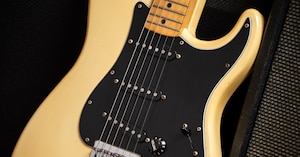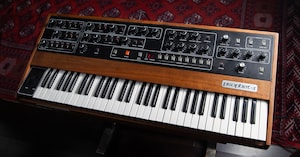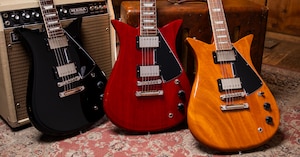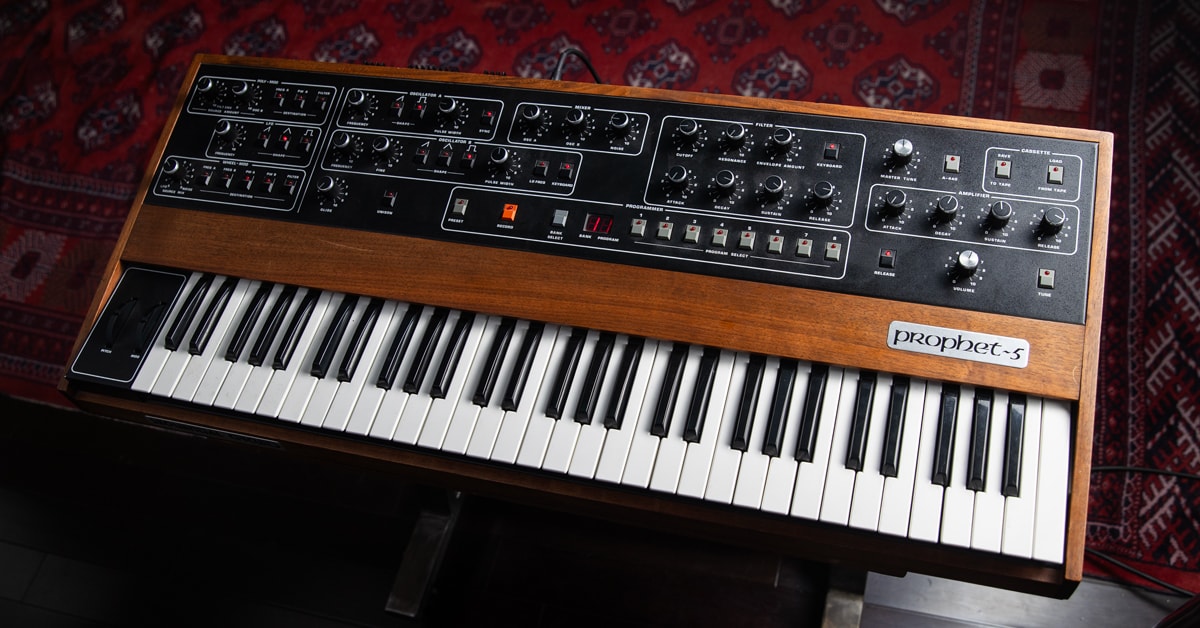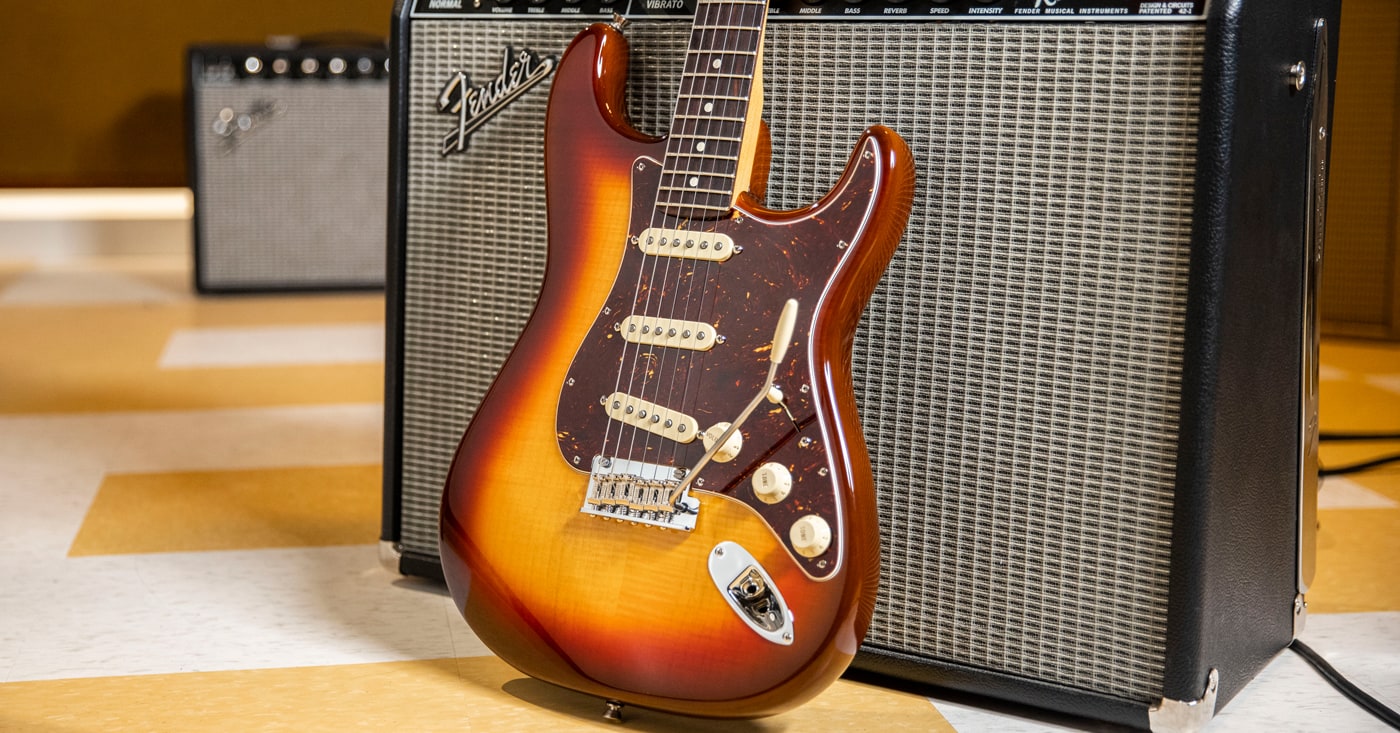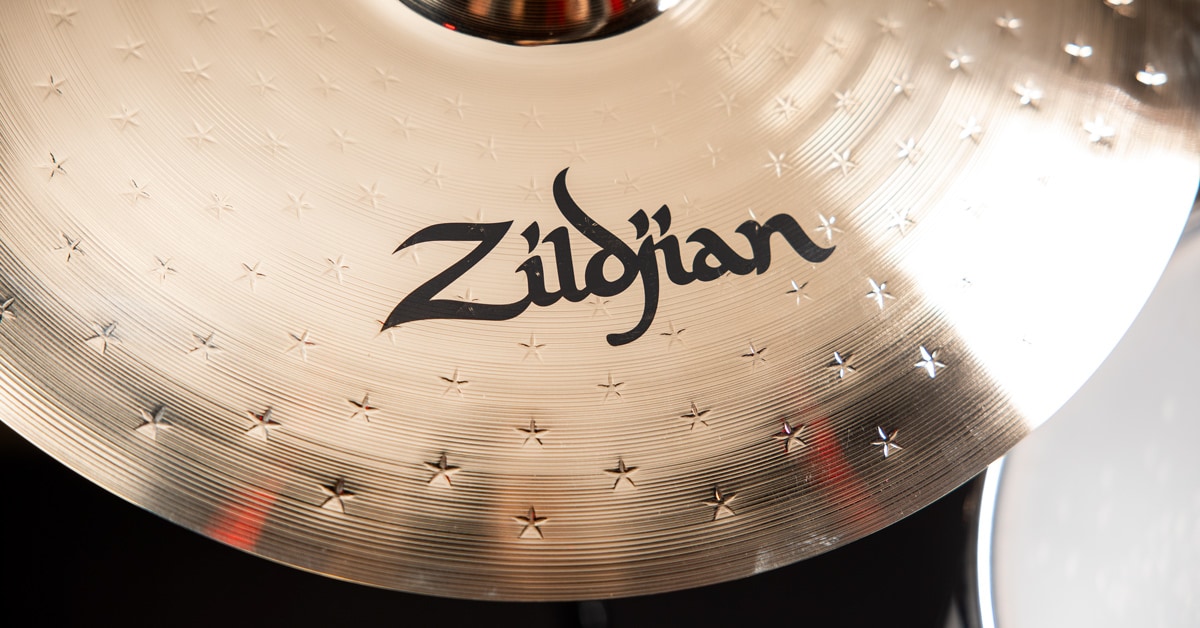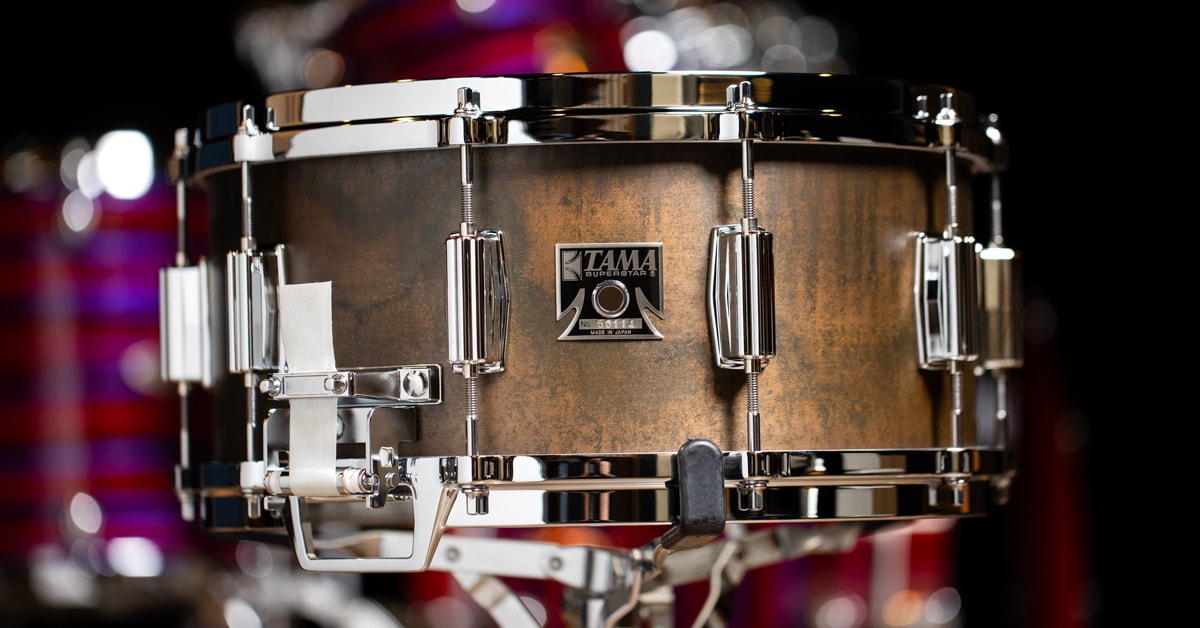Nicknamed “The Terminator” for its relentless capacity for busting through music mixes, the TAMA Bell Brass snare appeared on Metallica (1991, a.k.a. “The Black Album”) by Metallica, Nevermind by Nirvana (1991), Smash by The Offspring (1994) and scores of other celebrated and influential albums. The TAMA Bell Brass rapidly achieved mythic status, bolstered by its clear, present and meaty swack, as well as by the leading drummers, recording engineers and producers who made it one of the most rented snare drums for studio sessions ever.
First introduced in 1980, the TAMA Bell Brass came to own today’s snare marketplace, as well-maintained ’80s models commanded prices upwards of $10,000 to $15,000. It’s pretty commonplace that vintage, production-model guitars and amps reach astronomical prices, but a snare drum?
That’s the stuff of legend.
“The ’80s TAMA Bell Brass is one of the best snare drums in the history of the world,” says Ross Garfield—a.k.a. The Drum Doctor—founder of Los Angeles’ foremost drum rental, maintenance, repair and custom shop (who also provided the vintage Bell Brass snares used by Metallica, Nirvana and many others). “It not only has the high end —the crack—it also delivers some lows. The beauty of this drum is that you can tune it high for stick definition when playing fast, but still get that nice low end—which is why the Bell Brass is so sought after."
While the TAMA Bell Brass is absolutely revered and sought after, acquisition and rental prices, and the relative scarcity of excellent vintage models (Garfield has already retired the 1980 Nevermind snare) makes it near impossible for fans of the drum to make music with it.
That’s a bummer, but get ready for some good news.
For TAMA’s 50th anniversary (1974—2024), the company has released a stunningly accurate Bell Brass snare made to the exacting specs, materials and features of legendary ’80s drums. The new TAMA 50th Anniversary Mastercraft Bell Brass snare drum produces the sonic majesty of fabled vintage models that defined the heavy, hitmaking sounds of the ’80s and ’90s. Meticulously researched, reverse-engineered and built by TAMA’s Mastercraft team, the 50th Anniversary Bell Brass is the luxury item that it deserves to be, but it’s also within reach of professional drummers who want to groove with an iconic superstar snare.
Let’s dig into why the TAMA Bell Brass is so revered.
Table of Contents
The Sound of a TAMA Bell Brass Snare
Why is the TAMA Bell Brass Called The "Terminator"?
How Did TAMA Recreate the Bell Brass Snare?
The Making of the TAMA Bell Brass Shell
The Reason for the TAMA Bell Brass 10-Hole, Die-Cast Hoops
TAMA Bell Brass Hardware
The Pain of Paint
Listening Tests and Consistency
A Trio of Legendary Snare Drums
One More Tidbit About the TAMA Bell Brass Snare
The Sound of a TAMA Bell Brass Snare
The original TAMA Bell Brass snares produced a near-astonishing combination of articulate swack and meaty thud. These snare drums were also adored by microphones—which made a recording engineer’s job of crafting amazing snare sounds almost automatic. Whatever mic was used to capture the snare was okay with the Bell Brass, as it delivered the goods in just about every single case. Furthermore, it didn’t seem to matter all that much which drum heads were used, or how the snare was tuned. The Bell Brass would give up its jaw-dropping tone quite willingly.
“Bob Rock [producer of Metallica’s Black Album] wanted the snare to crack so it would cut through all of the guitars and vocals,” remembers Garfield. “But the Bell Brass is also louder, and it has more presence than comparable drums—which is why we use a snare like this for more rocking sessions. If you want to hear a Metallica track that typifies the TAMA Bell Brass sound, check out ‘Nothing Else Matters.’”
For recording geeks, producers and drummers, the magic of “Nothing Else Matters” is that the Bell Brass maintains its tonal signature during the sparse sections of the song, as well as when the super saturated guitars jump in to drive the guitar solo. Typically, changes in the audio spectrum tend to assert themselves upon specific source sounds—in essence subtly, or not so subtly, altering the timbre of vocals, keyboards, guitars and, yes, snare drums.
In the old days, you usually had to live with any slight frequency variations. DAWs made things easier. If an engineer or producer heard a tonal shift that bothered them, they could simply automate an EQ move to put the soundscape back in order. Now, while we may not know precisely how the snare track was managed on “Nothing Else Matters,” the tone definitely sounds consistent throughout the entire song. Bell Brass for the win.
“The wonder of the original Bell Brass snare lies in its sound—a thick, explosive crack capable of cutting through any mix,” says Yoshiki Sakato, drum merchandiser at TAMA, as well as one of the leads on the 50th Anniversary Mastercraft Bell Brass project. “But it's not just about power. This snare boasts a surprising blend of dampened warmth, dynamic range and sensitivity, creating a rich, ringing tone that facilitates both delicate ghost notes and thunderous rim shots. While the Bell Brass became a staple in the genre-defining heavy rock of the 1980s, its versatility found success with other genres, as well. Ross Garfield—who created [drum] sounds for Michael Jackson, Nirvana, Metallica and countless others, called it, ‘The most rented drum out of my shop.’ So, it's no surprise that Elvin Jones, Lars Ulrich, Dave Grohl and many more chose the TAMA Bell Brass snare as their go-to studio weapon.”
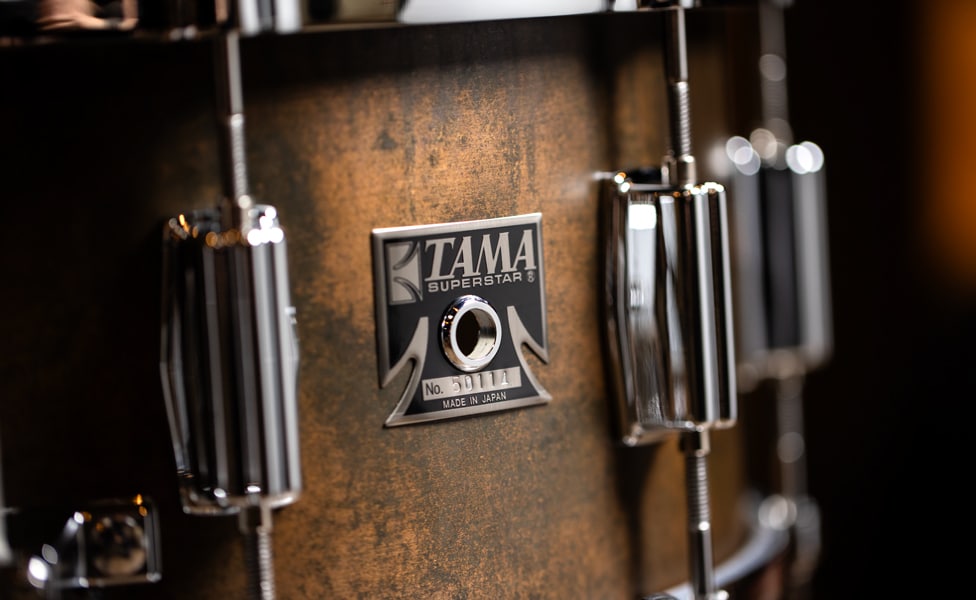
Why is the TAMA Bell Brass Called "The Terminator?"
We know the unrelenting killing machine Arnold Schwarzenegger portrayed in The Terminator (1984) influenced the TAMA Bell Brass snare’s famous nickname. Was it because the Bell Brass vanquished all other snares when engineers were picking a snare for a session? Perhaps the nickname was informed by the fact the Bell Brass could so easily smash through dense textures of huge guitars, vocals, keyboard layers and any other elements in a complex mix?
Those are excellent guesses, and they may even be true. Here’s the story straight from The Drum Doctor’s on-the-spot perspective.
“When I started renting out the Bell Brass in the early ’80s, we would audition a bunch of snare drums,” relates Garfield. “Someone would say, ‘Put up the Black Beauty,’ or ‘Put up the Supraphonic.’ The original Bell Brass was a really heavy drum, so someone would ask, ‘Put up that heavy drum,’ or ‘Put up the Schwarzenegger model.’ Eventually, I was working with a band during the time The Terminator came out in 1984, and somebody nicknamed this snare, ‘The Terminator.’”
In any case, the label stuck, and the nickname certainly added to the mythic qualities of the TAMA Bell Brass. So, thanks to Arnold and Sarah Connor and Skynet, you can have big fun today during your own sessions by demanding, “Put up ‘The Terminator.’”
How Did TAMA Recreate the Bell Brass Snare?
Accurately reconstructing a vintage guitar, amp or snare can be made more challenging due to current availability of materials, changes to those materials and even evolutions in manufacturing. While bringing back a snare drum from the 1980s might appear easier than building a precise recreation of a ’50s guitar amp with all of the vintage tube and circuitry variations, it was no picnic delivering a spot-on modern rebirth of The Terminator—especially as the original blueprints of the Bell Brass had been lost.
“We didn’t have the blueprints, and the original design team had left the company,” says Sakato. “But we did have an original Bell Brass snare at the corporate headquarters in Japan, so we could measure it and reference every detail. We meticulously reverse engineered all of the features and elements to recreate the original as closely as possible. We put a strong emphasis on accurately reproducing each component of the snare without compromise.”
Let’s look at each element of this legendary snare drum and reveal how the TAMA Mastercraft team undertook the job of bringing it to today’s drummers.
The Making of the TAMA Bell Brass Shell
How the TAMA Bell Brass snare came to be is an interesting story, and the “Once upon a time ...” element is why bell brass was chosen over other materials.
“In Japan, there are many temples and shrines, and most of them have these huge bells,” explains Sakato. “The sound of these bells is incredibly loud, and they also have a lot of sustain, so the company thought bell brass would be very suitable for a snare drum.”
However, one of the immediate challenges for crafting a bell brass shell to accurate 1980s specifications was that the materials and the manufacturing process had changed.
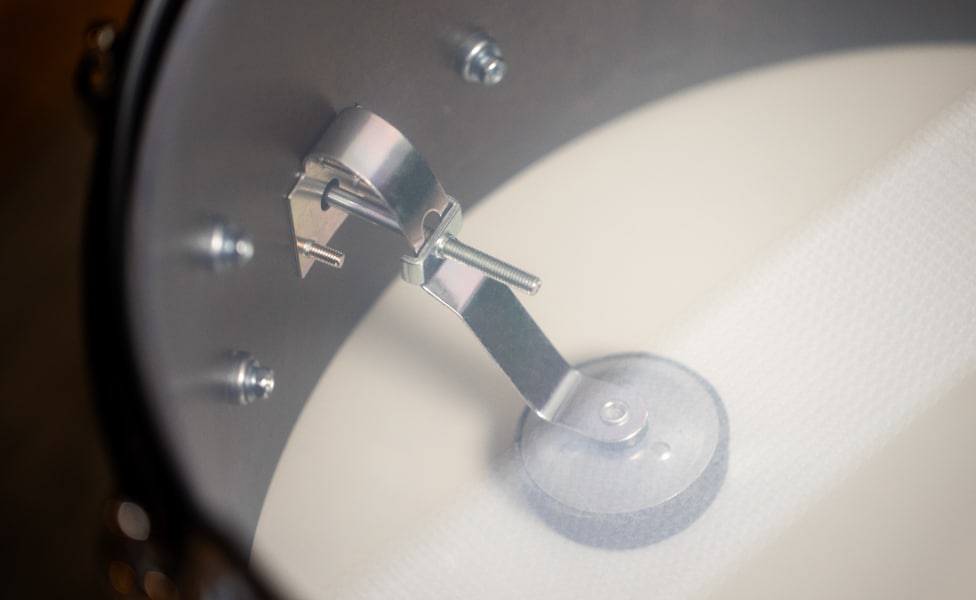
“Finding a new shell supplier to recreate the Bell Brass snare proved a significant challenge, because the original supplier was no longer in business,” says Sakato. “That forced us to evaluate alternate sources until we identified one capable of meeting our rigorous standards.
“We also carefully explored different shell-molding techniques, including sand-mold casting and centrifugal-mold casting. While the original Bell Brass employed sand-mold casting, after extensive testing and comparison—including A/B tests with the original snare at our factory—we determined centrifugal-mold casting yielded shells that more faithfully captured the tone of the original. We understand some players may question this decision, but we're confident drummers will recognize the slightly different molding process resulted in a reissue virtually indistinguishable from the legendary Bell Brass.”
The “brass” used for the shell is actually a metal alloy that is mostly copper and tin. The mixture is formed into a 3 mm thick shell that’s exactly 14" (355 mm) in diameter.
Keep that 355 mm dimension in mind, because it may be one of the secrets to the distinctive tone of the ’80s Bell Brass snare.
Most modern snare drums are typically 353 mm in diameter. The smaller 2 mm dimension makes it easier to get different drum heads from various manufacturers to seat easily onto the shell. The Bell Brass, however, typically takes a little muscle to install a drum head, but the “seal” between the head and the shell is also super tight—which could be one of the reasons the TAMA Bell Brass produces a resonant and meaty swack.
The Reason for the TAMA Bell Brass 10-Hole, Die-Cast Hoops
The hoop on Garfield’s celebrated 1981 TAMA Bell Brass snare is bell brass, which he stated was pretty common back in the day. The hoop used for the TAMA 50th Anniversary Mastercraft Bell Brass is die-cast. What’s the difference?
Bell brass hoops are often described as sounding—no surprise—bell-like. They also resonate nicely and can add a hint of fatness to the overall snare sound. Die-cast hoops are more heavy duty, so they hold their tuning and can take a beating. They also exhibit a dry, focused and articulate sound.
Let’s bring The Drum Doctor back to add some context here. Garfield owns the famous 1981 Bell Brass snare with a brass hoop that drummer Lars Ulrich played on Metallica, as well as the equally renowned 1980 model with die-cast hoops Dave Grohl used for Nirvana’s Nevermind.
“I took off the original bell brass hoops on the 1980 snare, and I put on die-cast hoops because they make it easier to tune the drum lower,” explained Garfield.
Meanwhile, the TAMA Mastercraft team was using one of the company’s original 1980 Bell Brass snares as a reference for the new snare. Much like Garfield, they selected a die-cast hoop for the TAMA 50th Anniversary Mastercraft Bell Brass to deliver an articulate attack and consistent tuning.
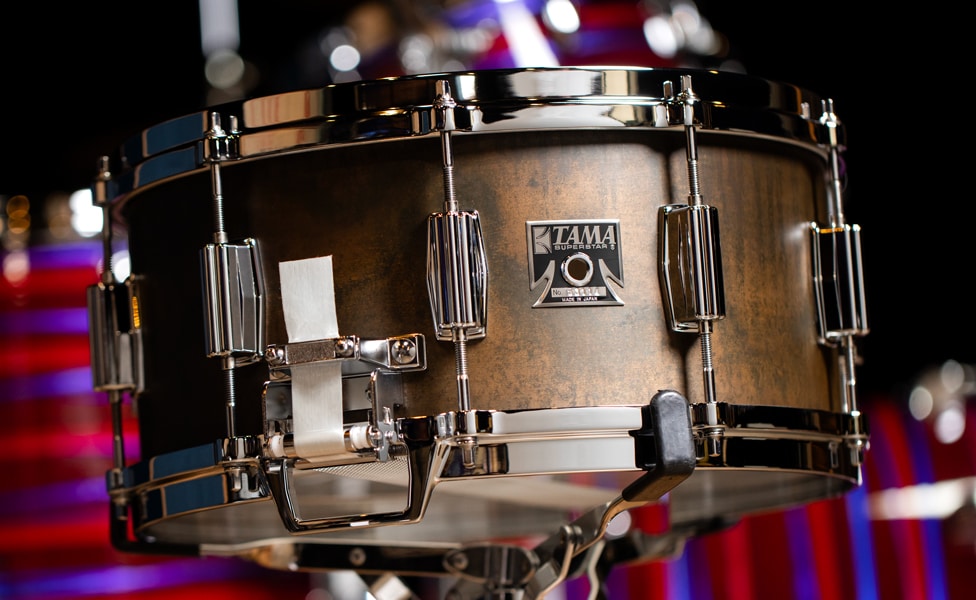
“We wanted to enhance the snare’s tuning benefits by opting for die-cast hoops,” says Sakato. “We also chose a 10-hole hoop that makes tuning easier, more accurate and more stable compared to 8- or 6-hole designs. These were clear choices for us.”
It’s obvious that both hoops can serve drummers quite well, but, as Garfield often does in his custom shop, you can always modify things to better suit your playing style and tonal preferences. In this case, if you consider yourself more like Dave Grohl, the TAMA 50th Anniversary Mastercraft Bell Brass should do fine, right out of the box with die-cast hoops. However, if you’re more of a Lars Ulrich, you can always swap the die-cast hoops for bell brass hoops.
TAMA Bell Brass Hardware
Lacking the 1980-era blueprints, when TAMA’s Mastercraft team deconstructed the company’s original Bell Brass snare, the exercise also afforded an opportunity to look at improvements to the design that offered modern playability without sacrificing tone. While the One-Touch Tone Control (a savvy and adjustable internal muffler) on the TAMA 50th Anniversary Mastercraft Bell Brass was recreated to original specs, the Roller Action Strainer received an overhaul.
“We made a single, deliberate change to the original design,” says Sakato. “We replaced the original 4 mm square head bolts for the strainer and butt with stronger 5 mm square head bolts. The original bolts were historically prone to breakage, and we knew we could improve upon that issue, while staying true to the drum’s overall design and sound.”
The TAMA 50th Anniversary Mastercraft Bell Brass also includes a scrupulous recreation of the 18-strand, carbon-steel extended snare wire that increased the dynamic sensitivity of the original ’80s model.
“The Bell Brass’ legendary cut and power are undeniable,” says Sakato, “but its sensitive response and remarkable dynamic range are equally revered. The unique design and composition of the 18-strand snare wire is a core contributor to this versatility. To faithfully capture this essential characteristic, we thoroughly researched everything, from the selection of premium materials to the exact number of coil turns. As a result, we were able to select a new snare wire that is the closest to the original.”
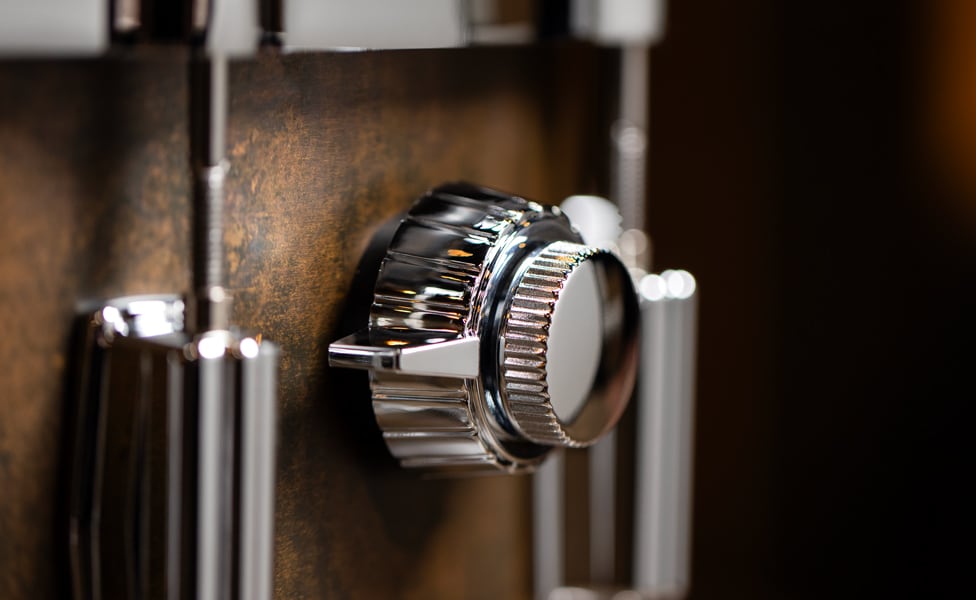
The Pain of Paint
The TAMA Mastercraft team was so obsessed with recreating a magnificently accurate “rebirth” of the 1980s Bell Brass snare that they hand-painted the shell 30 times before they were satisfied with the appearance. After all, they had an original 1980s model at the factory, which meant the team could put a newly painted shell side-by-side with the original and determine if they had nailed the look or not.
It didn’t help that, like the 1980 blueprints, the initial paint recipe had been lost, as well.
“We had to find a way to get the paint right,” says Sakato. “I know that paint doesn’t really affect the sound of the snare, but as this is a Mastercraft project dedicated to a near-perfect replica of the original Bell Brass snare, the appearance was critically important. We’d paint the shell and wait 15 minutes, then 20 minutes and then 30 minutes, because even how long the paint sat affected the look. We’d compare the new paint job with the original, take notes and then try again. It took 30 stages to get the aged verdigris patina just perfect. That’s crazy, right? But it’s a testament to our R&D team’s patience, focus and dedication that we could overcome hurdles like this and deliver a faithful reissue.”
Listening Tests and Consistency
The sand-mold casting of the original Bell Brass was not very sonically consistent from snare to snare. The shell material being very porous helped create disparities in the sound.
“This is why The Drum Doctor ended up with the holy grail of TAMA Bell Brass snares,” says Paul Holdgate, TAMA USA vice president of sales. “The snares were all slightly different in the 1980s. He got an incredible example.”
While finding a diamond in a bowl of glass rocks—or The Terminator amongst a collection of Bell Brass snares—is one of those “I won the lottery” kinds of stories, the reverse-engineering and consistent construction of the TAMA 50th Anniversary Mastercraft Bell Brass ensures that every one of the new models will sound as glorious as the 1980 original at the factory.
It's also interesting to note that a five-person Mastercraft team—helped when necessary by a greater panel of up to 30 Hoshino Gakki (TAMA’s parent company) employees, as well as possibly some selected TAMA artists, listened to the new Bell Brass snares to make sure they sounded spot on to the 1980 original. The drums were not recorded and evaluated in a DAW to see if the frequency and dynamic ranges lined up precisely to each other. The audio evaluations were a 100-percent organic process.
A Trio of Legendary Snare Drums
There are a vast number of awesome snare drums out there—which is why many professional drummers have collections of disparate models for every occasion. Perhaps one snare works best for ballads, another for jazz tunes, yet another for metal songs and so on. It’s good to have choices.
But there are three snares typically considered worthy of claiming the honor of being played on countless hits, used for vast numbers of studio sessions and prized by drummers of all styles. Those are the TAMA Bell Brass we’ve been detailing in this article, the Ludwig Black Beauty and the Ludwig Supraphonic. If you want to learn more about the Ludwig duo, please see Every Drummer Has One: The Story of the Ludwig Black Beauty which compares the two snare icons. For a quick reference, however, here’s a chart identifying the basic differences between the snare trinity.
|
|
TAMA 50th Anniversary Mastercraft Bell Brass |
Ludwig Black Beauty |
Ludwig Supraphonic |
|
Dimensions |
14x6.5" |
14x6.5" |
14x6.5" |
|
Shell Material |
Bell Brass |
Brass |
Chrome-Plated Aluminum |
|
Number of Lugs |
10 |
8 |
10 |
|
Sonic Characteristics |
Cracking, articulate highs with stout, meaty low end |
Focused, bright and open mids with a great snap |
Warm, rich swack with natural compression |
One More Tidbit About the TAMA Bell Brass Snare
According to Sakato, when TAMA was looking at the drum community back in 1980, it recognized that many companies offered matching snares for their kits, but there was also a demand for individual snares. This inspired the creation (well, along with the temple bells in Japan) of TAMA’s Bell Brass, a snare drum that stood as a distinctive and original character—a unique voice that went on to define the snare sound of heavy rock.

